Lately I have been thinking about death. Specifically death in comic books and malleable nature of what should be a permanent state. It seems like there is more death in comic books nowadays, but, as Walt would say “old farts like us have a funny way of remembering things”. Keeping in mind that my recall may not be so rosy, I decided to visit the internet and see which of my studious, comic book loving brethren (or sistren as the case may be) had the foresight and tenacity to compile such knowledge. Naturally I found it on Wikipedia. The List of deceased American comic book characters has a nice breakdown of which character died, when, and what cause their untimely demise. The list is further broken down into those who are still dead (a surprising majority) and those who have cheated death and made a triumphant return to the land of the living. I would also note that the list only included when something was an actual death, not simply the Joker escaping by seemingly blowing himself up.
I picked the death of Uncle Ben as a starting year because the only significant deaths listed before that were Thomas and Martha Wayne and Jor-El (and technically all of Krypton). Also some characters like Phoenix, Apocalypse, and Solomon Grundy are included as well but they are a very small percentage of deaths. Here are the total deaths from 1962 onward:
And here is the same data grouped by decade:
So we see that since the millennium the world of comic books has become a far more dangerous place. Or has it? The resurrections follow the same pattern. While you are far more likely to die in today’s comics, you are also more likely to be resurrected.
On average a Marvel character is resurrected after 9 years. The median is 5 years (we can assume that Bucky and Norman Osborn skew the numbers a bit). For DC the average time between death and resurrected is 7 years and the median is 3 years (I would assume that Blackest Night skews these numbers a bit). However, you are more likely to be resurrected in the Marvel Universe than in the DCU (94 resurrections to 69). About 30% of deaths in the Marvel U end up being resurrections, but only about 23% of the deceased in the DCU get a second chance. But resurrection has also become more rampant since the year 2000. In the Marvel U 84% of resurrections occurred from 2000 onward, and in the DCU 93% of all resurrections occurred during that same time period.
What the data shows is that death in comic books jumped drastically in the turn of the century. This doesn’t come as much of a surprise but the numbers are still staggering. What was once used as a deliberate, and rare, plot device has now become an overused and hackneyed choice to temporarily boost sales. This data could be sliced and diced further, for we could look at cause of death, or type of person who dies (hero, villain, side kick etc.), but even this high level examination is telling.
Death simply occurs too often in comic books for it have any real, lasting meaning as part of a story. Especially since resurrection has also become far more commonplace. Some of the fault can be blamed on continuity or the lack thereof. If a story could actually end you could write a death that would have meaning, but when you need to stretch out a story over 50 plus years it is pretty hard to have any lasting permanent state.

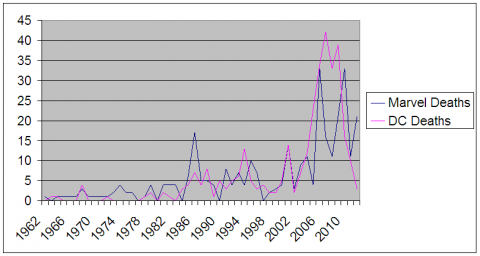

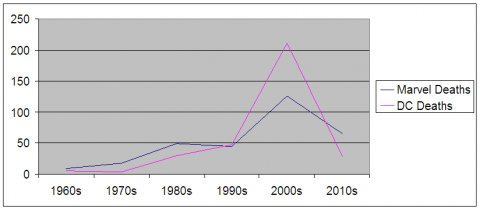
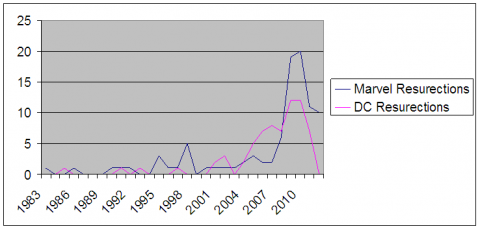
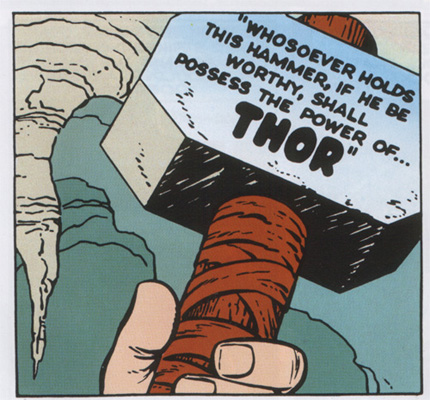

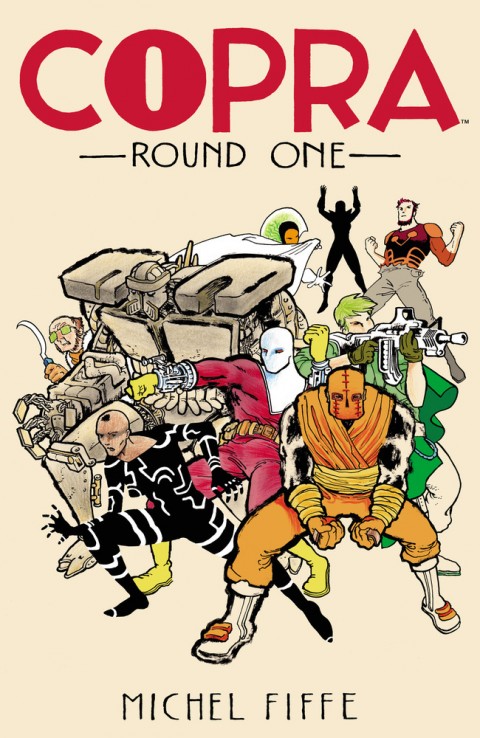
“What was once used as a deliberate, and rare, plot device has now become an overused and hackneyed choice to temporarily boost sales.”
That about says it all, Anthony. There’s far too much of this and it’s all about money and manipulation of readers. I can buy Batman getting his back broken or Batgirl recovering from a serious back injury a lot easier than Superman getting killed and coming back from the “dead.” Scott Snyder has proven that good story telling, not phony deaths, can boost sales much better. Let’s hope DC and Marvel notice.
Very interesting read, and hopefully this trend will swing back the other way. Sadly, people need to stop buying the issues before the publishers take any notice.
You Nailed it Laura.
An unsurprising majority of the still-dead characters are third-, fourth-, or tenth-rate characters no one remembers.
I’d question whether Jor-El, the Waynes, and Uncle Ben can even really been included in such a list, since they all died as part of the “Big Three” characters’ respective origin stories, and weren’t ongoing series regulars or anything. But I guess that’s also part of the reason they have to stay dead, and have.
Yes, if we groups the death in character tiers we would probably see that top-tier characters almost always come back, but the Stilt-Men of the world might be dead for a long time.